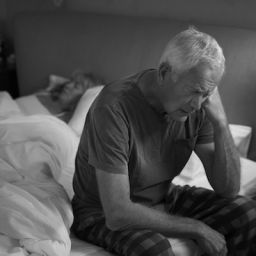Autism Spectrum Disorder (ASD) is a complex developmental condition characterized by differences in social communication and repetitive behaviors. Among the many challenges faced by individuals with ASD, sleep disturbances, particularly insomnia, are highly prevalent. Research indicates that 40-80% of children with ASD experience significant sleep problems, a rate much higher than their neurotypical peers. Addressing insomnia in individuals with ASD is crucial as poor sleep can exacerbate behavioral issues, hinder cognitive development, and negatively impact the overall quality of life for both the individual and their families. This article explores the relationship between insomnia and ASD and provides effective sleep strategies tailored to this unique population.
Understanding Insomnia in Autism Spectrum Disorder
Insomnia, defined as difficulty falling asleep, staying asleep, or waking up too early, is a common issue among individuals with ASD. Several factors contribute to this high prevalence, including:
-
Sensory Sensitivities: Many individuals with ASD have heightened sensitivities to sensory inputs such as light, sound, and touch. These sensitivities can make it difficult to create a sleep-conducive environment.
-
Anxiety and Stress: Anxiety is a common comorbidity with ASD. Elevated anxiety levels can interfere with the ability to relax and fall asleep.
-
Medical Conditions: Conditions such as gastrointestinal issues, epilepsy, and attention-deficit/hyperactivity disorder (ADHD) frequently co-occur with ASD and can contribute to sleep disturbances.
-
Irregular Sleep-Wake Patterns: Individuals with ASD often have irregular circadian rhythms, which can lead to difficulties in maintaining consistent sleep schedules.
-
Behavioral Factors: Repetitive behaviors and resistance to changes in routines can interfere with establishing and maintaining healthy sleep habits.
Effective Sleep Strategies for Individuals with ASD
Addressing insomnia in individuals with ASD requires a multifaceted approach that considers sensory sensitivities, behavioral tendencies, and the unique needs of the individual. Here are several evidence-based strategies to promote better sleep:
1. Creating a Sensory-Friendly Sleep Environment
A conducive sleep environment is paramount for individuals with ASD who may be hypersensitive to sensory stimuli. Consider the following modifications:
-
Light: Use blackout curtains to block external light sources and consider using a red night light, as red light is less likely to interfere with melatonin production.
-
Sound: White noise machines or fans can help mask disruptive background noises. Alternatively, noise-canceling devices can be useful.
-
Temperature: Keep the bedroom at a comfortable, cool temperature, as overheating can disrupt sleep.
-
Bedding: Select soft, comfortable bedding materials that do not irritate the skin. Weighted blankets can provide a calming effect for some individuals.
2. Establishing a Consistent Sleep Routine
Routine and predictability are crucial for individuals with ASD. Establishing a consistent bedtime routine can signal the body that it is time to wind down. Components of an effective bedtime routine include:
-
Regular Sleep Schedule: Set a consistent bedtime and wake-up time, even on weekends. This helps regulate the body’s internal clock.
-
Pre-Sleep Activities: Engage in calming activities before bed, such as reading a book, listening to soothing music, or practicing deep breathing exercises.
-
Avoiding Stimulating Activities: Minimize exposure to screens (TV, tablets, smartphones) at least an hour before bedtime, as the blue light emitted can interfere with melatonin production.
3. Addressing Anxiety and Stress
Managing anxiety and stress is critical for improving sleep in individuals with ASD. Consider the following techniques:
-
Relaxation Techniques: Teach and practice relaxation techniques such as progressive muscle relaxation, guided imagery, or mindfulness meditation.
-
Cognitive-Behavioral Therapy (CBT): CBT for insomnia (CBT-I) is an effective treatment that helps individuals change negative thought patterns and behaviors related to sleep.
-
Comfort Objects: Allowing the use of comfort objects, such as a favorite blanket or stuffed animal, can provide a sense of security.
4. Medical Interventions
In some cases, medical interventions may be necessary to address underlying conditions contributing to insomnia:
-
Melatonin Supplementation: Melatonin, a hormone that regulates sleep-wake cycles, has been found to be beneficial for some individuals with ASD. Consult with a healthcare provider before starting supplementation.
-
Addressing Co-Occurring Conditions: Treating co-occurring conditions such as gastrointestinal issues, ADHD, or epilepsy can improve sleep. Work with healthcare providers to manage these conditions effectively.
5. Behavioral Interventions
Behavioral interventions can be highly effective in addressing sleep issues in individuals with ASD:
-
Sleep Training: Implementing sleep training techniques, such as gradual withdrawal or the “Ferber method,” can help establish independent sleep skills.
-
Positive Reinforcement: Use positive reinforcement to encourage desirable sleep behaviors. Rewarding the individual for staying in bed or following the bedtime routine can be motivating.
-
Visual Supports: Use visual schedules or social stories to illustrate the steps of the bedtime routine. Visual supports can help individuals with ASD understand and follow the routine more easily.
6. Parental Involvement and Education
Educating and involving parents or caregivers in the sleep intervention process is essential:
-
Parent Training Programs: Enroll in parent training programs that provide strategies for managing sleep problems and other behavioral issues.
-
Consistency and Patience: Consistency and patience are key. It may take time for new sleep strategies to be effective, and setbacks can occur. Support from healthcare professionals can be beneficial during this process.
Conclusion
Insomnia is a significant challenge for many individuals with Autism Spectrum Disorder, but with tailored interventions, it is possible to improve sleep quality and overall well-being. Creating a sensory-friendly sleep environment, establishing consistent routines, managing anxiety and stress, and considering medical and behavioral interventions are all crucial components of an effective sleep strategy. By addressing the unique needs of individuals with ASD and involving parents and caregivers in the process, it is possible to foster better sleep and, consequently, enhance the quality of life for those affected by insomnia and ASD.










